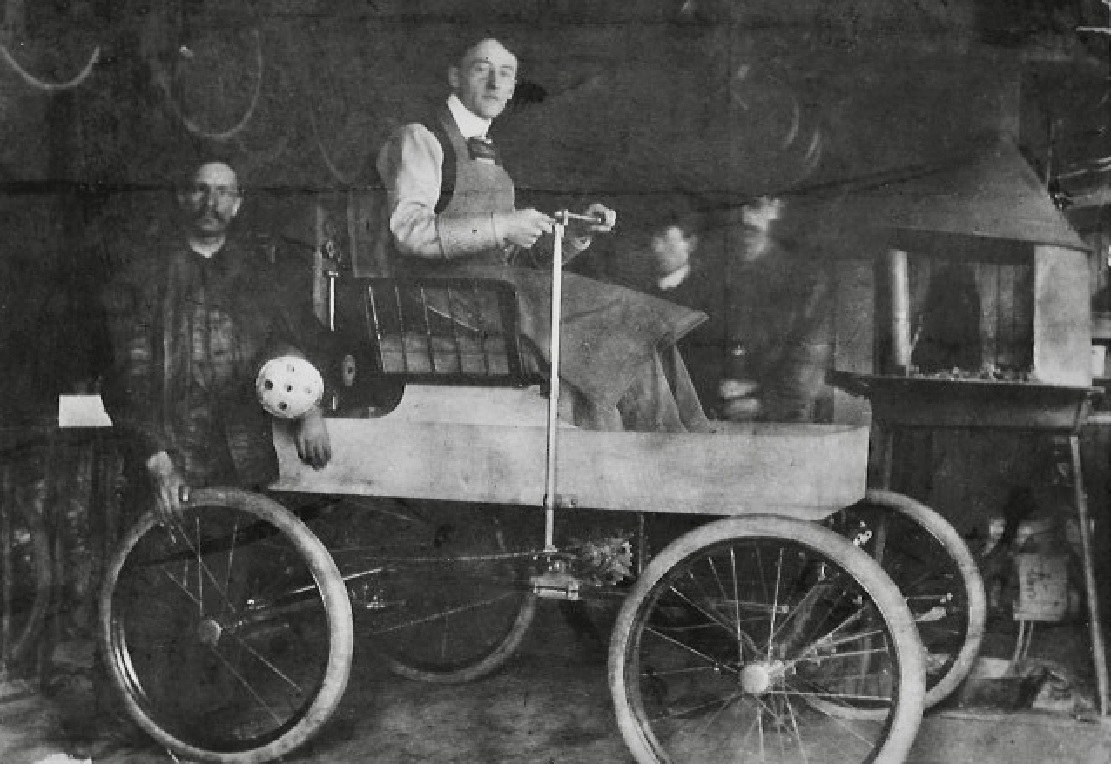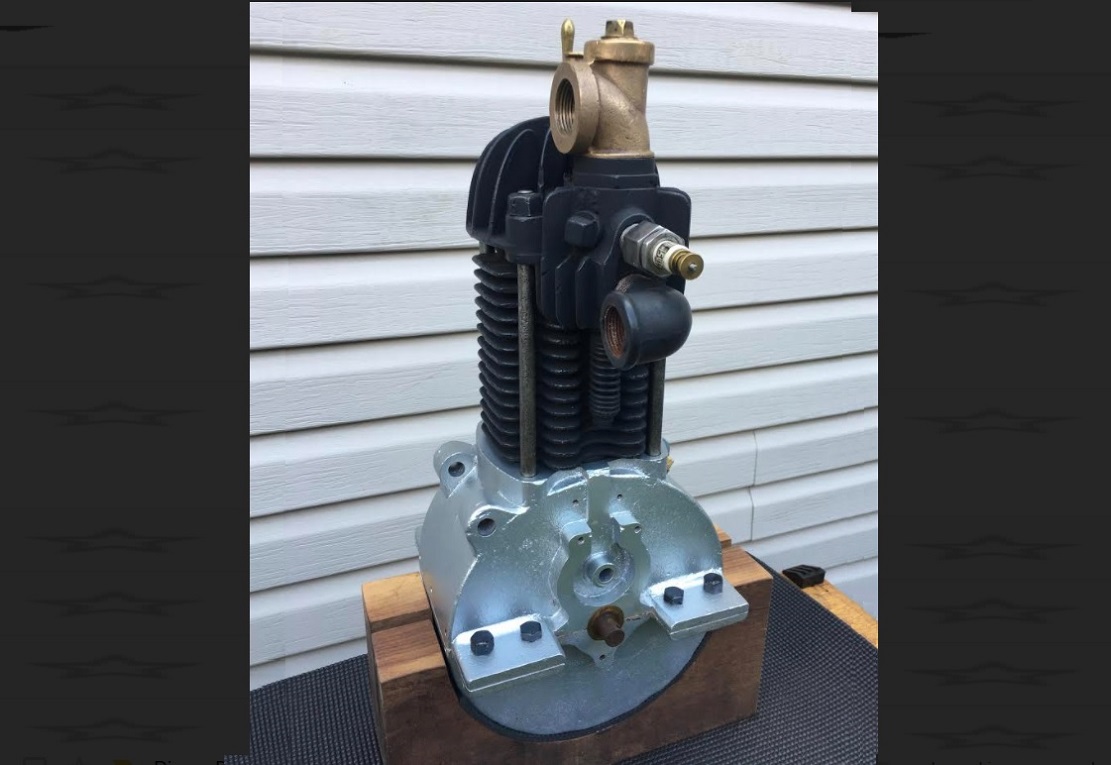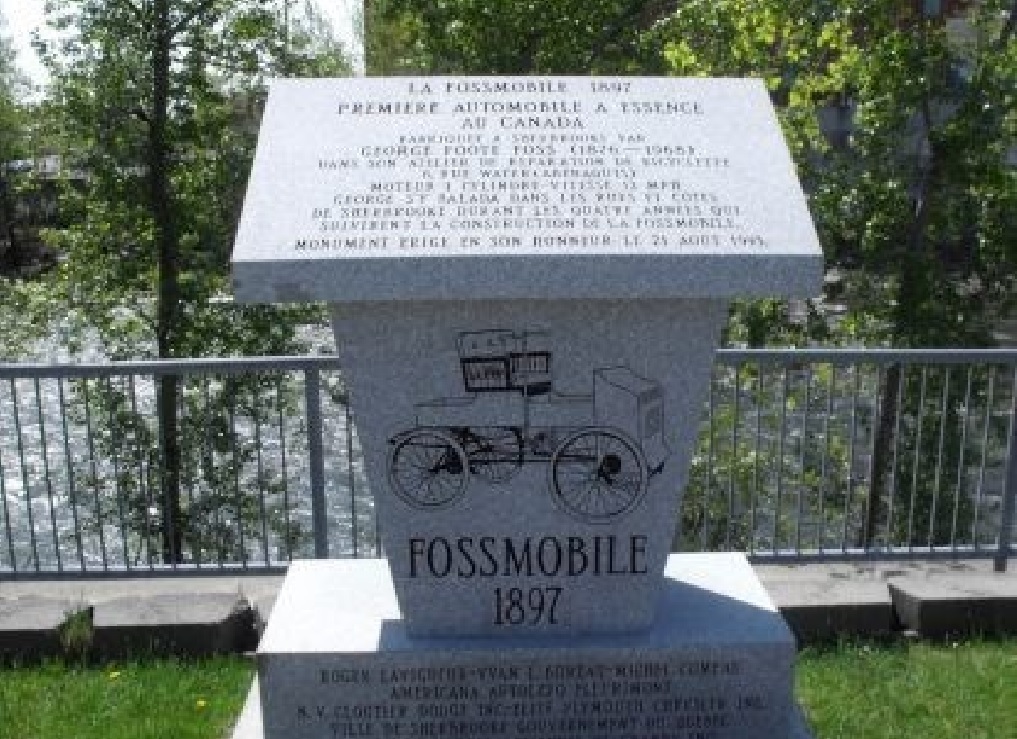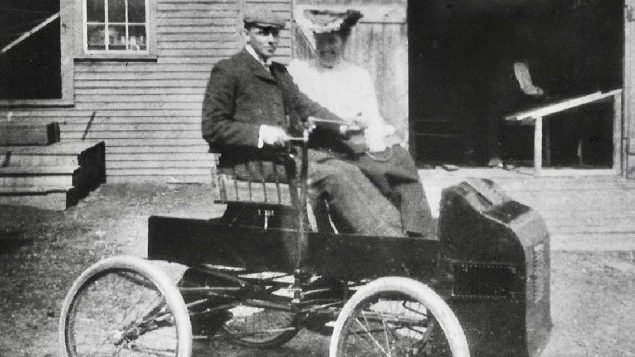Very few Canadians will know the name of Henry Seth Taylor, a jeweler and clockmaker in Stanstead Quebec. Nor will they know the names William Still and Frederick B. Fetherstonhaugh of Toronto. The name George Foote Foss, is also a name lost to time.
A few specialized Canadian historians may recognize Taylor as the inventor of the first steam-powered buggy in Canada in 1867 which he drove around the countryside and exhibited to great fascination at the local fair. That creation still exists and is on display at the Science and Technology Museum in the Canadian capital, Ottawa.
Mssrs. Still and Fetherstonhaugh created the first electrical powered vehicle in 1893, obviously well-before any concerns about the environment.
But it was on this date in 1968 that another unsung inventor quietly passed away. He was George Foote Foss originally from Sherbrooke, Quebec.
It was Foss who built the first gasoline powered vehicle in Canada.

George Foote Foss in his partially completed “horseless carriage”.circa 1896 in his shop in Sherbrooke, Qc. ( Foss family)
The year was 1896, Foss had been running a machinery shop, smithy, bicycle and electrical repair business at the time. He caught the idea of building a powered vehicle after a trip to Boston and a ride in a battery-powered electric wagon, but which he noted only had power for about 30 minutes.
Small gasoline engines were being developed at the time, and Karl Benz of Germany is often credited with being the first to gasoline powered ‘horseless carriage’, a three wheeler in 1895-86, followed almost immediately be Gottlieb Daimler with a four-wheeled carriage. Across the ocean Henry Ford had also begun testing his first rudimentary vehicle and the Duryea Brothers had also built a handful of their examples and were already selling them. While other inventors elsewhere in the world would quickly follow, this would put Canada’s Foss, who completed his ‘car’ in spring of 1897 at least among the very first inventors to use an internal combustion engine to power a vehicle, and the first in Canada.

A period original wagon body, wheels, and frame restored thanks to several specialised shops. It is thought the frame- restored from being badly damaged in a fire, might be from an early Locomobile. ( R Foss supplied)
In, fact with his own smithy (forge) and machine shop, at the Geo. F. Foss Electric and & Machine Works, he studied the rudimentary concepts of the still very small, single cylinder engines and built his own. Using parts from the shop and from a carriage the resulting vehicle was called the “Fossmobile”.
While he could have been the founder of a major automotive enterprise, he only built one example.
In an interview with Driving, grandson Ron Foss of Burlington, Ontario, said his grandfather didn’t want debt and so wouldn’t accept offers from bankers to finance the building of more Fossmobiles. Ron also said there was a chance to buy into Henry Ford’s new operation but he didn’t like Ford’s car and didn’t like Ford himself. Foss would later move to Montreal and become a dealer for the American Crestmobile, which bears a striking resemblance to Foss’ creation. This had lead Ron to suspect a strong influence from his grandfather in the American design. Crest lasted only a few years, and apparently became part of the later Chrysler company.
The unique example of the Fossmobile however seems to have disappeared, but grandson Ron, is in the process of building a new replica. This is being done as a tribute to his grandfather and also to the history of Canadian automobile manufacturing and a chapter that’s been forgotten. The reproduction is being done at the Legendary Motor Car Company of Halton Hills, Ontario.

A restored period engine of unknown origin will be added, Apparently GF Foss built his own, but as he later added a cover to the front, no photos of that engine exist. Engines of the era provided about 5hp, and enabled speeds of 12-15mph. Foss’ 2-apeed transmission is said to have enabled his car to climb any of Sherbrooke’s hills with little problem ( R Foss supplied)
Because there are no blueprints a lot of painstaking reverse-engineering measurements for parts are being measured from the photos available. Several local specialized shops have also been involved in various aspects of the recreation including period correct leaf springs, upholstery, wheels and period tires, wood body restoration.

A small memorial to GF Foss along the waterfront in Sherbrooke where the shop once stood,, now a parking lot ( waymarking.com)
A campaign is underway to help finance the project which hopes to see this replica of Canada’s first gasoline powered vehicle on public display likely in the Canadian Automotive Museum in Oshawa.
Additional information-sources







For reasons beyond our control, and for an undetermined period of time, our comment section is now closed. However, our social networks remain open to your contributions.